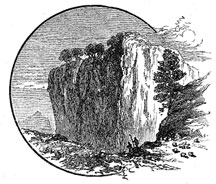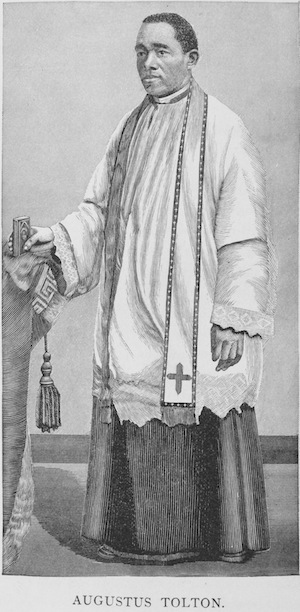
P.O. Box 1333
Merchantville NJ 08109, USA
Email: info@arxpub.com
 |
Arx Publishing, LLC P.O. Box 1333 Merchantville NJ 08109, USA Email: info@arxpub.com |
|
|
|
||
 |
THE Tarpeian Rock An Annual Literary Magazine "Hinc ad Tarpeiam sedem et Capitolia ducit aurea nunc, olim siluestribus horrida dumis." --Virgil's Aeneid, VIII, l. 347-8 |
Articles from the 2019 issue... The Kisses That Killed Prejudice La Pucelle "It's Either Surrender or Fight!" Return to Tarpeian Rock homepage |
 On
a cold January morning, in the year of Our Lord 1892, the
Reverend Dr. Henry L. Phillips, entered a Catholic Church and
stayed to observe High Mass. He was not himself Catholic. In
fact, he was rector of the Crucifixion Protestant Episcopal
Church of Philadelphia. But he was a black minister serving a
black congregation, and he was there for a special event: the
Third Colored Catholic Congress, whose purpose was to gather
black Catholic leaders across the United States. Its opening
Mass was celebrated by the first recognized black priest in the
nation: Father Augustus Tolton. And assisting Father Tolton that
day were two white priests: Father John Burke as deacon, and
Father John Griffin as subdeacon.
On
a cold January morning, in the year of Our Lord 1892, the
Reverend Dr. Henry L. Phillips, entered a Catholic Church and
stayed to observe High Mass. He was not himself Catholic. In
fact, he was rector of the Crucifixion Protestant Episcopal
Church of Philadelphia. But he was a black minister serving a
black congregation, and he was there for a special event: the
Third Colored Catholic Congress, whose purpose was to gather
black Catholic leaders across the United States. Its opening
Mass was celebrated by the first recognized black priest in the
nation: Father Augustus Tolton. And assisting Father Tolton that
day were two white priests: Father John Burke as deacon, and
Father John Griffin as subdeacon. | Visit the |
 |